BYD Seal vs XPeng P7 – Suorituskyky, toimintamatka ja kulutus vertailussa
Molemmilla malleilla on vahvuutensa – mutta kumpi sopii sinulle paremmin?
Vertaa suorituskykyä, kulutusta, hintaa ja tiloja suoraan: BYD Seal vai XPeng P7?
As the electric vehicle (EV) market continues to expand, two Chinese automotive players, BYD and XPeng, are making significant strides in innovation and technology. Both companies are making waves with their latest offerings, the BYD Seal and the XPeng P7i, in the sedan category. This article will dive into a comprehensive comparison of these two electric sedans, highlighting their technical specifications and the innovations that set them apart.
Overview of Models
The BYD Seal, a 2023 model, offers a sleek design complemented by impressive technical prowess. With a choice between rear-wheel drive (RWD) and all-wheel drive (AWD) configurations, it promises a mix of efficiency and performance. On the other hand, the XPeng P7i, the 2024 iteration of XPeng's flagship sedan, boasts a more refined design with competitive specifications aimed at the tech-savvy driver.
Power and Performance
When it comes to horsepower, the BYD Seal offers a robust performance with its two power options: 313 HP for its base variant and a thrilling 530 HP for the performance version. In contrast, the XPeng P7i offers a more modest 276 HP in its entry-level model, while the high-performance variant peaks at 473 HP. Both cars offer compelling acceleration figures, with the Seal achieving 0-100 km/h in just 5.9 seconds for the AWD version, while the XPeng P7i excels with a remarkable 4.1 seconds in its high-performance variant.
Battery and Range
Range anxiety is a common concern among EV buyers, and both BYD and XPeng address this issue effectively. The BYD Seal provides an electric range of 570 km with a consumption rate of 16.6 kWh/100 km, while the XPeng P7i offers slightly more range at 576 km, albeit with a slightly higher consumption of 16.8 kWh/100 km. Both vehicles are designed to ensure that drivers can enjoy lengthy trips without frequent charging stops.
Torque and Top Speed
Torque is a critical specification for electric vehicles as it affects acceleration and driving dynamics. The BYD Seal offers a respectable torque of 360 Nm, while its performance variant pushes this figure to 670 Nm. Meanwhile, the XPeng P7i takes it a notch higher with an entry-level 440 Nm and an impressive 757 Nm in its high-performance model. In terms of top speed, the BYD Seal caps out at 180 km/h, while the XPeng P7i offers a more exciting maximum speed of 200 km/h.
Interior and Space
Inside, both vehicles are equipped with premium materials and modern technology. The BYD Seal features a trunk capacity of 400 liters, making it quite practical for everyday use. The XPeng P7i has a slightly more generous trunk space at 440 liters, providing that extra touch of convenience for the driver. Ultimately, both cars seat five, a common feature for sedans in this category.
Weight and Efficiency
The BYD Seal has a curb weight ranging from 2055 kg for the base variant to 2185 kg for the performance version. The XPeng P7i is just a tad lighter, with its weight ranging from 2020 kg to 2180 kg across its variants. Both vehicles fall under the CO2 efficiency class A, indicating their commitment to sustainability with zero g/km emissions.
Technological Innovations
In terms of technology, XPeng stands out with its advanced driver assistance systems (ADAS) and innovative in-car connectivity features. The XPeng P7i is equipped with a host of driver-assist features that enhance safety and convenience. Meanwhile, BYD is focusing on a balance between utility and performance, integrating technologically advanced infotainment systems that appeal to traditional drivers and tech enthusiasts alike.
Conclusion
In the battle of BYD vs. XPeng, both manufacturers bring unique strengths to the table. The BYD Seal offers impressive power, efficiency, and practicality, making it a strong contender in the electric sedan market. On the other hand, the XPeng P7i provides exceptional performance, advanced technology, and an innovative approach that resonates with consumers seeking a tech-driven vehicle. Ultimately, prospective buyers must weigh their priorities—whether they prioritize raw power, innovative technology, or a balanced blend of both—before making a decision.
Tässä mennään yksityiskohtiin: tekniset erot tarkemmin
Kustannukset ja kulutus: Hinta ja tehokkuus ovat usein ensimmäiset valintakriteerit auton ostossa. Tässä näkyy, kumpi malli on pitkällä aikavälillä edullisempi – tankatessa, ladatessa tai hankintahinnassa.
BYD Seal on hinnassa kevyt edullisempi – sen lähtöhinta on 47000 €, kun taas XPeng P7 maksaa 49600 €. Ero on noin 2610 €.
Sähkönkulutuksessa etu on BYD Seal:lla. Se kuluttaa 15.40 kWh /100 km ja on kevyt energiatehokkaampi kuin XPeng P7, jonka kulutus on 16.80 kWh. Ero on noin 1.40 kWh.
Toimintamatkassa XPeng P7 suoriutuu tuskin havaittava paremmin: se yltää jopa 576 km:een, noin 6 km enemmän kuin BYD Seal.
Moottori ja suorituskyky: Teho, vääntömomentti ja kiihtyvyys ovat autoharrastajien klassisia mittareita – ja erot tulevat tässä hyvin esiin.
Moottoritehossa BYD Seal on jonkin verran etulyöntiasemassa – 530 hv verrattuna 473 hv:een. Ero on noin 57 hv hv.
Kiihdytyksessä 0–100 km/h BYD Seal on vähäinen nopeampi – 3.80 s vs. 4.10 s. Ero on noin 0.30 s sekuntia.
Huippunopeudessa BYD Seal on melkein huomaamaton edellä – se yltää 220 km/h:een, kun taas XPeng P7 saavuttaa 200 km/h. Ero on noin 20 km/h.
Vääntömomentissa näkyy myös ero: XPeng P7 vetää hieman voimakkaammin, 757 Nm verrattuna 670 Nm:een. Eroa on noin 87 Nm.
Tila ja käytännöllisyys: Perheauto vai arjen kumppani – kumpi tarjoaa enemmän tilaa, mukavuutta ja käytettävyyttä?
Molemmissa autoissa on tilaa 5 henkilölle.
Omapainossa BYD Seal on vähäinen kevyempi – 1907 kg verrattuna 2020 kg:een. Painoero on noin 113 kg.
Tavaratilan koossa XPeng P7 tarjoaa tuskin havaittava enemmän – 440 L verrattuna 400 L:een. Ero on noin 40 L.
Kantavuudessa BYD Seal on kevyt parempi – 473 kg verrattuna 430 kg:een. Ero on noin 43 kg.
Yhteenvetomme: BYD Seal osoittautuu olevan voittaa selvästi ja saa siksi tittelin DriveDuel Champion!
Tässä vertailussa BYD Seal on monipuolisempi kokonaisuus.
BYD Seal
Seal on moderni ja tyylikäs sähköauto, joka erottuu kilpailijoistaan rohkealla muotoilullaan ja toiminnallisuudellaan. Sen tilava sisustus ja huipputeknologiset varusteet tekevät siitä erinomaisen valinnan niin kaupungissa ajamiseen kuin pidemmille matkoille. Ympäristöystävällinen voimanlähde yhdistettynä innovatiivisiin ominaisuuksiin tekee Sealista houkuttelevan vaihtoehdon sähköauton hankintaa harkitseville.
Tiedot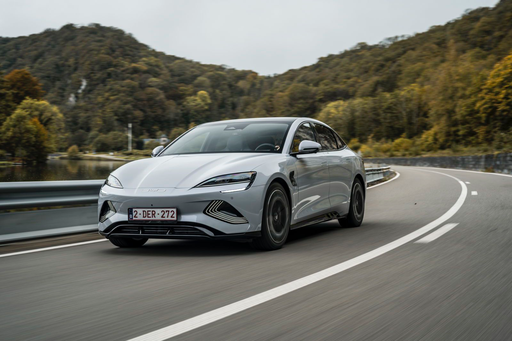 @ press.bydauto.be
@ press.bydauto.be
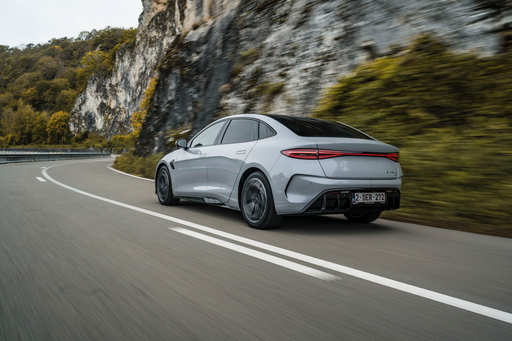 @ press.bydauto.be
@ press.bydauto.be
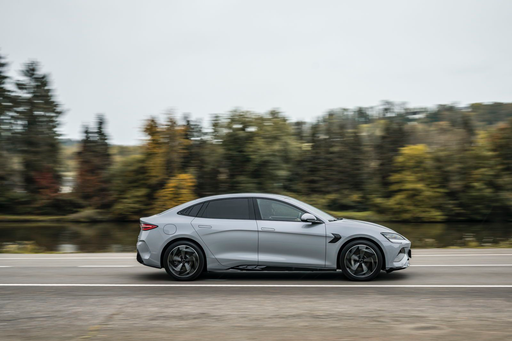 @ press.bydauto.be
@ press.bydauto.be
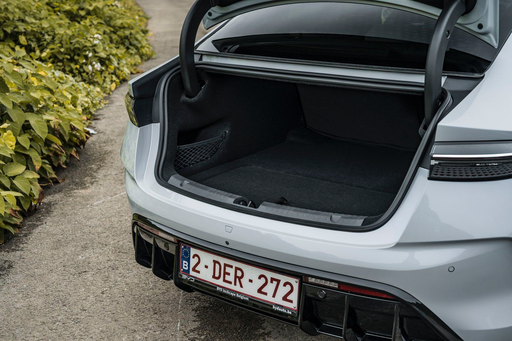 @ press.bydauto.be
@ press.bydauto.be
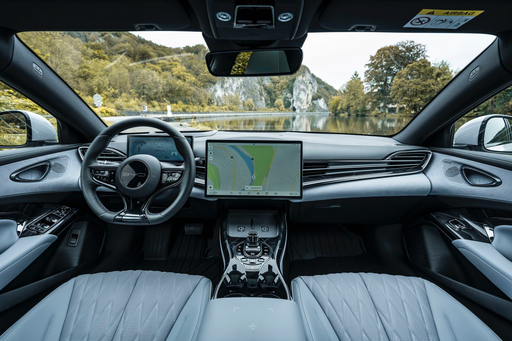 @ press.bydauto.be
@ press.bydauto.be
XPeng P7
P7 on saanut kiitosta modernista muotoilustaan ja innovatiivisista ominaisuuksistaan, jotka tekevät siitä houkuttelevan valinnan nykyaikaisille autoilijoille. Sen tilava sisustus ja huipputeknologiset varusteet tarjoavat mukavuutta sekä käytännöllisyyttä päivittäisessä ajamisessa. P7 yhdistää tyylikkään ulkonäön erinomaisiin ajettavuusominaisuuksiin, mikä tekee siitä kilpailukykyisen vaihtoehdon markkinoilla.
Tiedot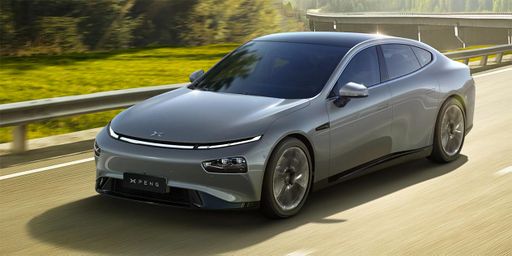 @ XPeng
@ XPeng
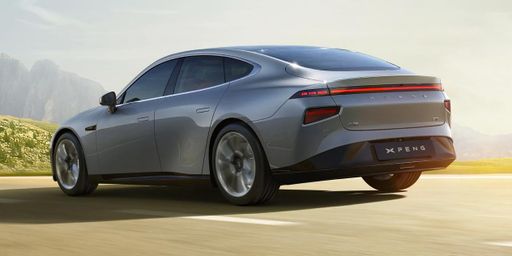 @ XPeng
@ XPeng
 @ XPeng
@ XPeng

|

|
|
|
|
Kustannukset ja kulutus |
|
|---|---|
|
Hinta
47000 - 53000 €
|
Hinta
49600 - 58600 €
|
|
Kulutus L/100km
-
|
Kulutus L/100km
-
|
|
Kulutus kWh/100km
15.4 - 18.2 kWh
|
Kulutus kWh/100km
16.8 - 19.2 kWh
|
|
Sähköinen toimintasäde
460 - 570 km
|
Sähköinen toimintasäde
505 - 576 km
|
|
Akun kapasiteetti
-
|
Akun kapasiteetti
82.70 kWh
|
|
CO2
0 g/km
|
CO2
0 g/km
|
|
Polttoainesäiliön tilavuus
-
|
Polttoainesäiliön tilavuus
-
|
Mitat ja kori |
|
|---|---|
|
Kori
Sedan
|
Kori
Sedan
|
|
Istuimet
5
|
Istuimet
5
|
|
Ovet
4
|
Ovet
5
|
|
Omamassa
1907 - 2185 kg
|
Omamassa
2020 - 2140 kg
|
|
Tavaratila
400 L
|
Tavaratila
440 L
|
|
Pituus
4800 mm
|
Pituus
4888 mm
|
|
Leveys
1875 mm
|
Leveys
1896 mm
|
|
Korkeus
1460 mm
|
Korkeus
1450 mm
|
|
Maksimi tavaratila
-
|
Maksimi tavaratila
-
|
|
Kantavuus
446 - 473 kg
|
Kantavuus
430 kg
|
Moottori ja suorituskyky |
|
|---|---|
|
Moottorityyppi
Sähkö
|
Moottorityyppi
Sähkö
|
|
Vaihteisto
Automaatti
|
Vaihteisto
Automaatti
|
|
Vaihteiston tyyppi
Alennusvaihteisto
|
Vaihteiston tyyppi
Alennusvaihteisto
|
|
Vetotapa
Takaveto, Neliveto
|
Vetotapa
Takaveto, Neliveto
|
|
Teho hv
231 - 530 hv
|
Teho hv
276 - 473 hv
|
|
Kiihtyvyys 0-100 km/h
3.8 - 7.5 s
|
Kiihtyvyys 0-100 km/h
4.1 - 6.7 s
|
|
Huippunopeus
180 - 220 km/h
|
Huippunopeus
200 km/h
|
|
Vääntömomentti
360 - 670 Nm
|
Vääntömomentti
440 - 757 Nm
|
|
Sylinterien lukumäärä
-
|
Sylinterien lukumäärä
-
|
|
Teho kW
170 - 390 kW
|
Teho kW
203 - 348 kW
|
|
Iskutilavuus
-
|
Iskutilavuus
-
|
Yleiset |
|
|---|---|
|
Mallivuosi
2023 - 2025
|
Mallivuosi
2024
|
|
CO2-tehokkuusluokka
A
|
CO2-tehokkuusluokka
A
|
|
Merkki
BYD
|
Merkki
XPeng
|
Millaisia voimalinjoja BYD Seal:ssa on saatavilla?
BYD Seal on saatavilla Takaveto tai Neliveto-vetotavalla.
Näytetyt hinnat ja tiedot ovat arvioita, jotka perustuvat Saksan listahintoihin, ja voivat vaihdella maittain. Nämä tiedot eivät ole oikeudellisesti sitovia.
